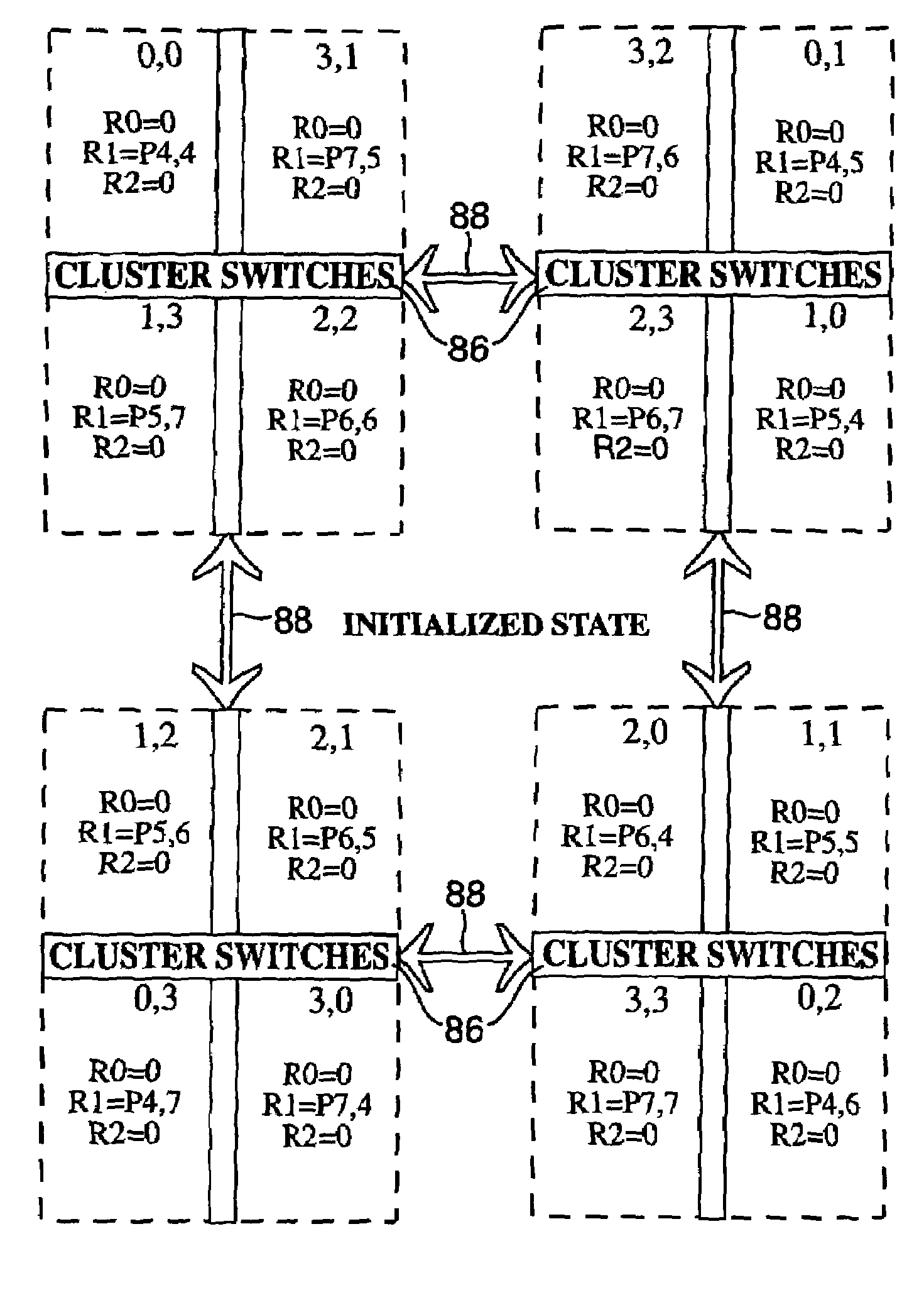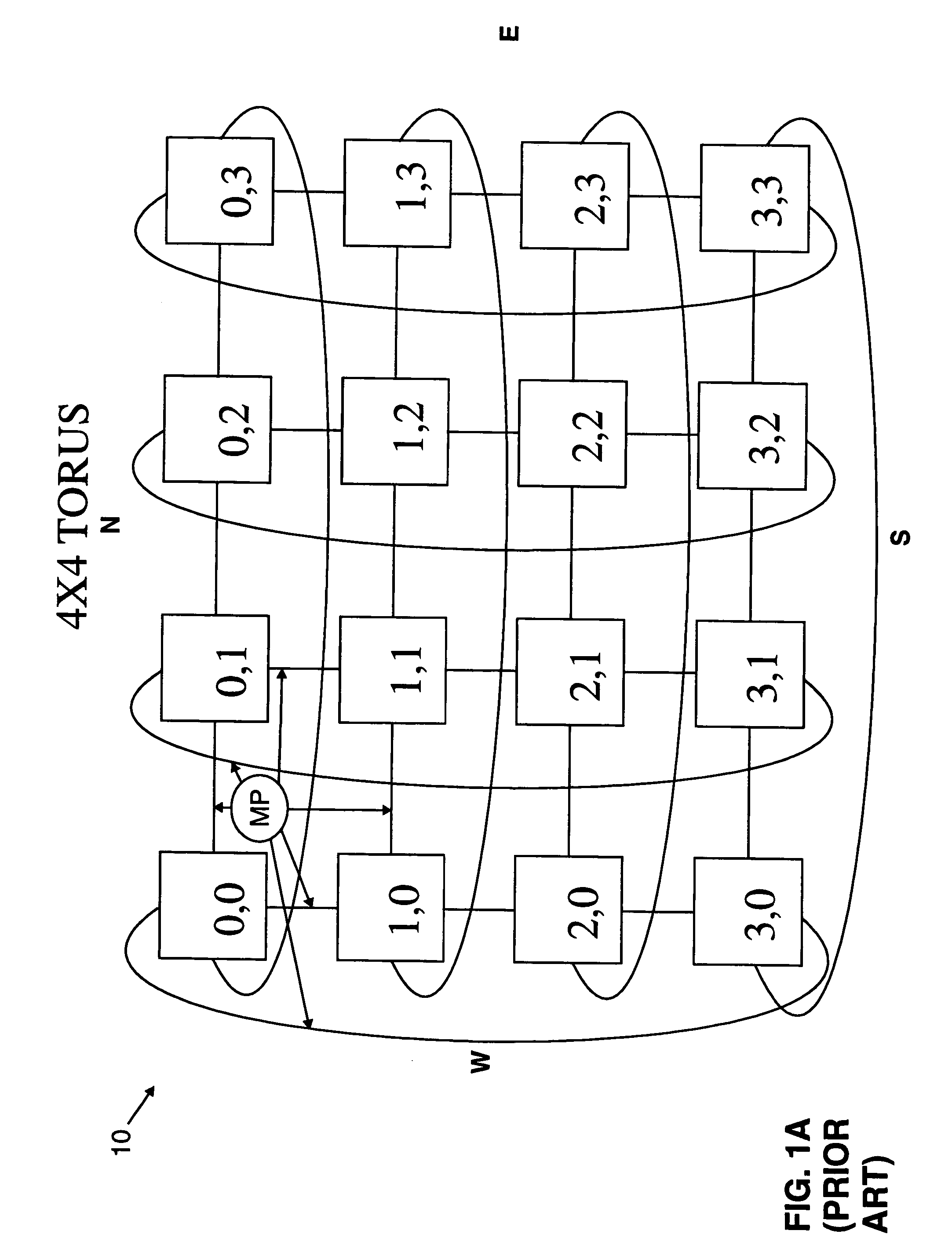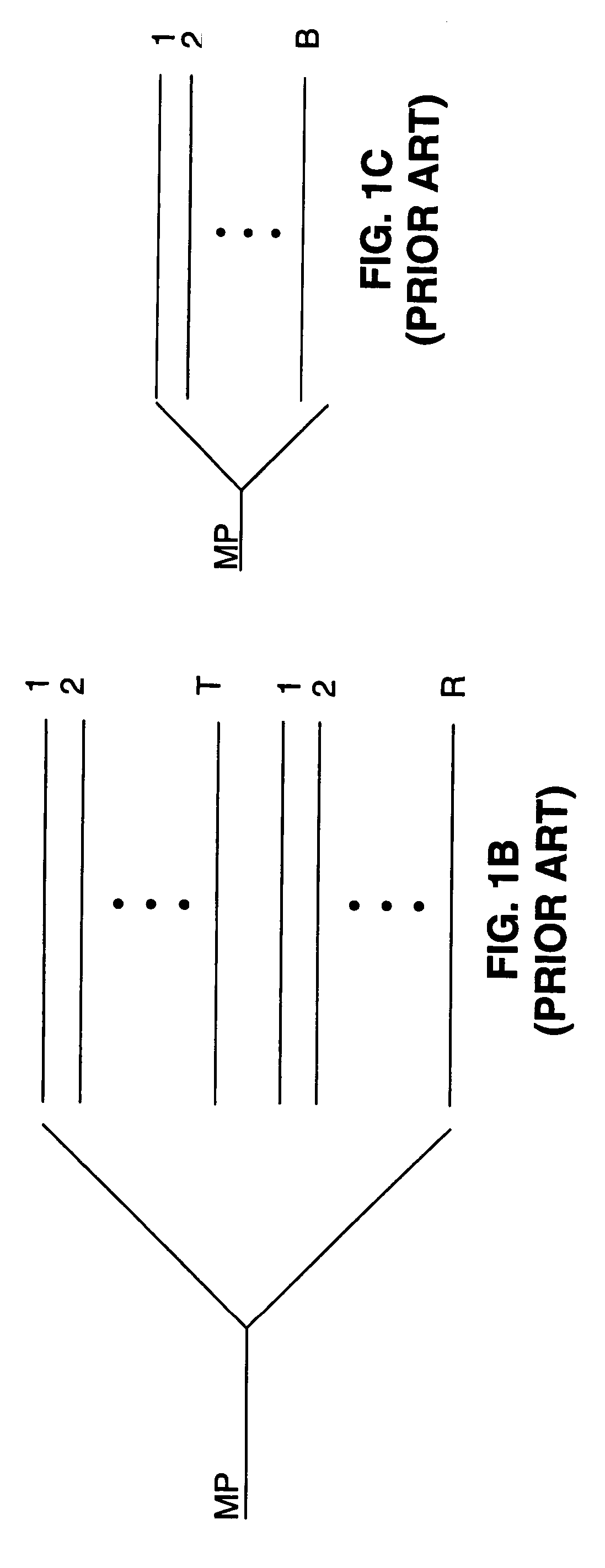Manifold array processor
a multi-layer array and processor technology, applied in the field of parallel processing architectures, can solve the problems of consuming a great deal of valuable integrated circuits, introducing noise to communications lines, and complex wiring of torus-connected arrays, so as to reduce the length of the longest interconnection wire, and reduce the complexity of the array's interconnection wiring requirements
- Summary
- Abstract
- Description
- Claims
- Application Information
AI Technical Summary
Benefits of technology
Problems solved by technology
Method used
Image
Examples
Embodiment Construction
[0040]In one embodiment, a new array processor in accordance with the present invention combines PEs in clusters, or groups, such that the elements of one cluster communicate with members of only two other clusters and each cluster's constituent processing elements communicate in only two mutually exclusive directions with the processing elements of each of the other clusters. By clustering PEs in this manner, communications paths between PE clusters may be shared, thus substantially reducing the interconnection wiring required for the array. Additionally, each PE may have a single transmit port and a single receive port or, in the case of a bidirectional sequential or time sliced transmit / receive communication implementation, a single transmit / receive port. As a result, the individual PEs are decoupled from the topology of the array. That is, unlike a conventional torus connected array where each PE has four bidirectional communication ports, one for communication in each direction...
PUM
 Login to View More
Login to View More Abstract
Description
Claims
Application Information
 Login to View More
Login to View More - R&D
- Intellectual Property
- Life Sciences
- Materials
- Tech Scout
- Unparalleled Data Quality
- Higher Quality Content
- 60% Fewer Hallucinations
Browse by: Latest US Patents, China's latest patents, Technical Efficacy Thesaurus, Application Domain, Technology Topic, Popular Technical Reports.
© 2025 PatSnap. All rights reserved.Legal|Privacy policy|Modern Slavery Act Transparency Statement|Sitemap|About US| Contact US: help@patsnap.com



